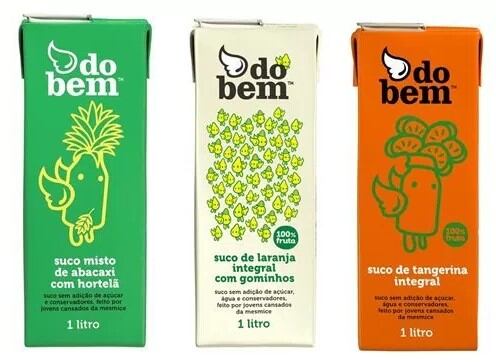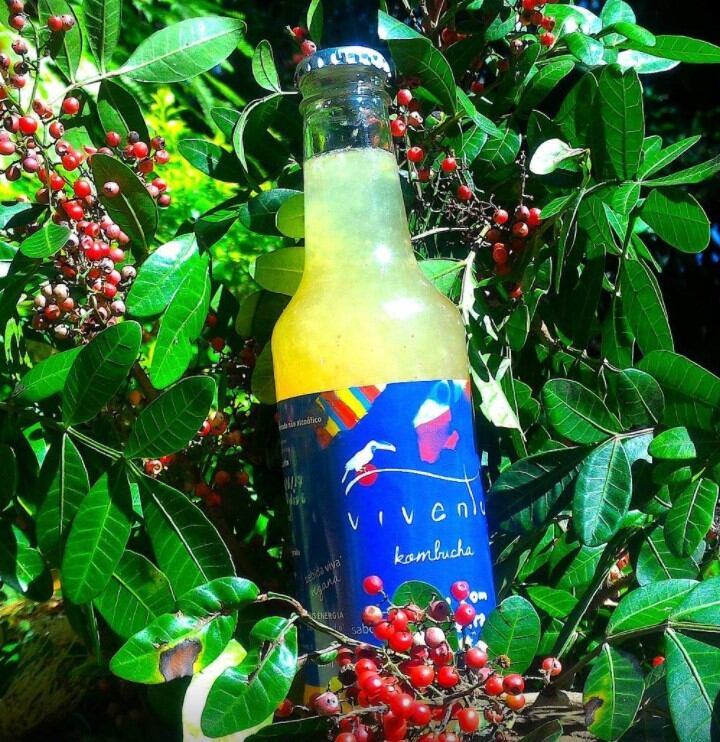When the Brazilian Dietary Guidelines were released in 2014, renowned food policy expert Prof Marion Nestle described them as “remarkable” in a blog post on Food Politics. “Now if only our [U.S.] Dietary Guidelines Advisory Committee would take note and do the same,” she wrote.
The way Brazilians eat has undoubtedly been changing over the past few years, Angelica Salado, senior research analyst at Euromonitor International told us, but she did not think that it was an immediate result of the 2014 Dietary Guidelines.
“It seems to be much more related to a consolidated – and still ever growing – desire to be in shape,” said Salado. “Brazilians are overall very concerned with beauty and their bodies, so products with a positioning of being reduced- sugar, salt or fat definitely have an appeal. In accordance with Euromonitor International’s latest survey with consumers, 26% of Brazilians stated they were in a diet or trying to lose weight in 2017, against 23% for Americans.”
“When it comes to consumers of higher income levels, however, it is clear that there is a more intense movement towards food and beverages with a healthy positioning,” added Salado. “The demand for organics, lactose and gluten free products and even functional ones continues to increase by double-digit growth rates, although these are pretty much inhibitive for a wide majority of Brazilians due to higher unit prices.
“It seems that the overall understanding of the meaning of “health” is evolving from a pure perception of weight control towards a more holistic view combining mental wellbeing, with a balanced diet and also the frequent practice of physical activities.
“As these attitudes are still much more common for higher income consumers, there is indeed an “aspirational” aspect for lower income ones – resulting in the pursuit of a healthy lifestyle as a symbol of status.”
The obesity issue
Higher income consumers are one thing, but the diets of the poorer segments of Brazilian society remain a source of intense interest. The same year as the guidelines were released, the UN’s World Food Program removed Brazil from its Hunger Map. On the other hand, overweight and obesity rates have risen dramatically, with almost 60% of Brazilians now overweight, and about 20% obese. In an interview with the IFT’s FutureFood 2050 in 2015, endocrinologist Walmir Coutinho said that if Brazil doesn’t change its ways, it could become “the most obese nation in the world” by 2030.

So is it changing? Not really, according to a highly critical article published last month in The New York Times, or yes, according to a more positive article in The Nation.
“Overall, we can say that food and beverage manufacturers, as well as retailers, are gradually changing their offers to attract a more [health] conscious and interested consumer,” said Euromonitor’s Salado. “There is still a long way to go until the percentage of Brazilians who are overweight or obese actually retracts and it is hard to say if this was somehow influenced by the dietary guidelines or if it is just a deepening of the body shaping trend that has always been in the country – but there is certainly an irreversible trend towards less processed items and a more balanced diet for the upcoming years.”
Increasing healthy retail outlets
Salado noted that there is a movement of increasing the number of specialized stores on healthy products all over the country, as well as a higher availability of products with such positioning in the traditional grocery retailers.
“Consumers are willing to include these products in their purchase baskets, although most of them are much more expensive than traditional ones, even though that would require them to cut expenses in other items – also a global trend described as “purchasing less, purchasing better”. One of the leading health specialist retailers, Mundo Verde, increased by 199% the number of outlets between 2011 and 2016 in the country,” she noted.
And because the market for such products is not well consolidated at this point, there are plenty of opportunities for small and regional players to conquer the space, she added. “Some regional juice brands like Natural One and Do Bem, for example, have quickly expanded their operations to the whole country – appearing among leading juice brands in less than 5 years. More than that, these have also leveraged interest of multinational companies willing to expand their portfolio towards healthy products,” said Salado.

Do bem was acquired by Anheuser-Busch InBev NV (the leading player in alcoholic drinks in Brazil and also producer and distributor of PepsiCo beverages in the country) in 2016 as a way to expand its product portfolio to include juices. The Coca-Cola Company, through its partner Leao Alimentos, expanded into the dairy sector with the purchase of Verde Campo at the end of 2015.
“While some companies choose the acquisitions path to re-think their portfolio, others try to reformulate their products. Recently, Mondelez International, local owner of the powder concentrate brand Tang came up with a new product formula, named Tang Nutri and enriched with vitamins,” noted Salado. “Nestlé Brasil has also been gradually reducing some of its most traditional chocolate brands’ portions, as to give consumers a greater control over ingested sugar content.”
A spokesperson for Mondelez told us that Brazilian (and Latin American) consumer generally wants healthier snacking options: products with more authentic ingredients and a better nutritional profile.
“However, we also see very little willingness to sacrifice taste, particularly with respect to many of the types of snacks our consumers have enjoyed their entire lives. They are simply not ready to give up their favorite brands or the flavors they grew up on,” said the spokesperson. “So one of the simplest ways we’re adjusting to these trends is by offering more portion-control options and including front-of-pack calorie and nutrition information so our consumers can make more informed snacking choices.”
The meat scandal
One of the sectors that has seen a significant shift in consumer consumption habits is meat, although the reason for this appears to not be primarily linked to health.
“It is safe to say that eating habits in Brazil are going through significant changes,” said Gustavo Guadagnini, Managing Director, Brazil for The Good Food Institute. “This is a process that started over 10 years ago, but it has surely accelerated after scandals involving the meat industry in the country.
“While the loss of trust in big food companies has been a steady trend worldwide, trust in a company can be destroyed in a moment. Nothing illustrates this better than the recent revelations about the corruption and appalling sanitation practices in Brazil’s meat industry.”
Earlier this year, the country was engulfed in controversy after Brazil’s federal police launched operation ‘Weak Flesh’ with more than 1,000 officers raiding meat factories across six Brazilian states. Investigators alleged some factory managers bribed politicians and health inspectors to secure export certificates and food safety approval for meat that was never checked for hygiene standards. The revelations led to many countries, including the US, banning Brazilian beef imports. The US recently lifted the ban on the importation of processed beef from Brazil.
“These revelations destroyed consumer trust almost instantaneously,” said Guadagnini. “After the scandal, online research company MindMiners showed that 50% of Brazilians were considering reducing their meat consumption. Sixteen percent of consumers also said they had thrown away meat they had bought before finding out about the scandal, and 95% said they were going to follow the investigation closely as it unfolded.”
This has led to an increase in interest in the plant-based meat industry among Brazilians.
Vegetarians, flexitarians, and reducetarians
A 2007 study by IPSOS showed that 28% of Brazilians were willing to eat less meat, and that trend has continued over the past decade, with Brazil reaching its lowest meat consumption level in the past 14 years in 2016.
“Just a year before, in 2015, PROTESE released another study saying that 48% of Brazilians had eaten less animal protein in the year before. In this group, 89% had replaced part of their meat consumption with plant-based protein (soy in most cases). Twenty-four percent of consumers reported that they avoid eating meat once a week,” noted Guadagnini.
“Although it’s difficult to say exactly how many vegetarians there are in Brazil, the research plainly shows that vegetarian, vegan, and flexitarian diets are growing in Brazil and South America, while meat consumption is falling,” he added.

Brazilian Millennials are a significant driver in creating healthier food alternatives, said Guadagnini, with a number of plant-based companies either created or managed by Millennials, including NoMoo, VidaVeg, Novah (producing plant-based cheese), Mr. Veggy (in plant-based meat), Eat Clean (for nut-based products), HeyHo (focuses on snacks), and Viventu (which makes Kombucha using typically Brazilian ingredients).
Guadagnini noted that data shows that Brazil’s natural products market grew 98% over the past five years and is currently pegged at around US$35bn. “We are already seeing big conventional companies demonstrating interest in this market, such as Danone and Nestle beginning to sell plant-based dairy products,” he said.
“The organic sector is also expected to grow 20% in 2017, which is an impressive considering that the country is going through an economical crisis.”
The 10 steps to healthy diets:
1. Make natural or minimally processed foods the basis of your diet
2. Use oils, fats, salt, and sugar in small amounts when seasoning and cooking natural or minimally processed foods and to create culinary preparations
3. Limit consumption of processed foods
4. Avoid consumption of ultra-processed foods
5. Eat regularly and carefully in appropriate environments and, whenever possible, in company
6. Shop in places that offer a variety of natural or minimally processed foods
7. Develop, exercise and share cooking skills
8. Plan your time to make food and eating important in your life
9. Out of home, prefer places that serve freshly made meals
10. Be wary of food advertising and marketing
(from the FAO’s Food-based dietary guidelines – Brazil)

